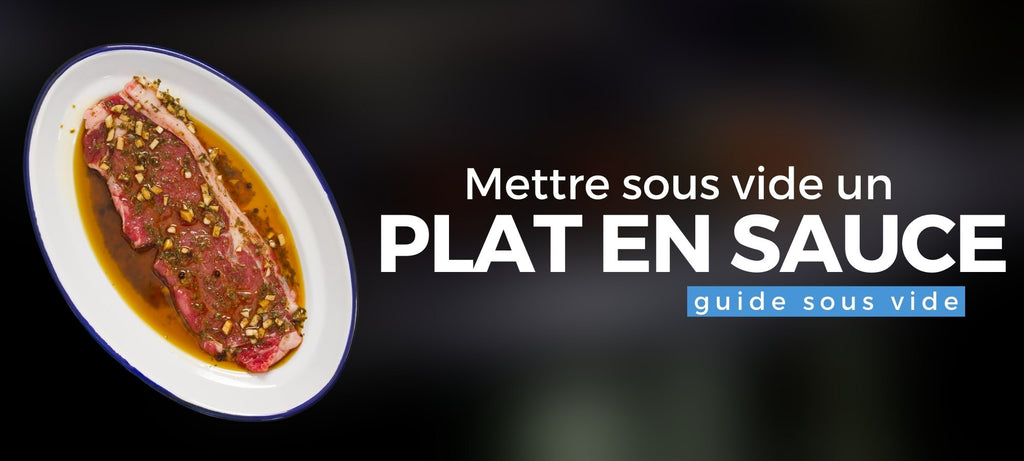Vacuum seal a dish in sauce


Cooked meals with sauces can be difficult to preserve due to the variety of ingredients they contain. However, there is a technique for preserving dishes with sauces for much longer.
Vacuum-sealing a casserole dish is a popular food preservation technique that preserves the flavor, texture, and nutrients of food while reducing the risk of bacterial growth. Vacuum-sealed casserole dishes can be stored up to ten times longer than traditionally stored dishes.
Now discover all our tips for storing dishes in sauces under vacuum:
Can you vacuum seal dishes with sauces?
Yes, you can vacuum seal dishes with sauces. However, there are a few considerations to ensure good quality and food safety.
How to vacuum seal a dish in sauce:
-
After preparation, let the dish cool for a few minutes to avoid any risk of the vacuum bag bursting.
-
Once the dish has cooled, pour the mixture into a vacuum bag, making sure there is a margin for sealing.
-
Remove the air from the bag using a vacuum machine, making sure that the liquid is not sucked into the machine.
-
Seal the bag with your vacuum machine.
- Once sealed, place the bag in the refrigerator or freezer depending on your storage life needs.
By following these guidelines, you can vacuum-pack sauces for better preservation and flavor. It's important to consult reliable sources for storage times and cooking temperatures for each dish.
Why vacuum seal a dish in sauce?
One of the benefits of vacuum-sealing cooked meals and casseroles is that it preserves food for a longer period of time than traditional preservation methods, such as refrigeration or freezing. Vacuum-sealed food can be preserved up to five times longer than traditionally stored food, which means less food waste and considerable financial savings .
Vacuum-sealing dishes with sauces helps preserve the flavors and texture of food. Removing air prevents food oxidation and prevents dehydration, allowing the food to retain its original taste and texture. Vacuum-sealed foods also have the advantage of not losing nutrients because they are not exposed to air, heat, or light, as is the case with traditional cooking.
Finally, vacuum-sealing cooked and saucy dishes reduces the risk of bacterial contamination because it prevents bacteria from growing by removing air and creating a sterile environment. This means that vacuum-sealed foods are safer to eat and less likely to cause foodborne illness.
Preserving cooked dishes and dishes in sauce under vacuum:
The shelf life of a sous vide casserole depends on several factors, including the type of casserole, the ingredients used, and the storage temperature. Generally, sous vide casseroles can be stored for 3 to 4 weeks in the refrigerator and 6 to 12 months in the freezer. It's important to check the expiration date and follow storage instructions to avoid the risk of food poisoning.
It is also important to ensure that dishes with sauce are securely packaged in food-grade vacuum bags . Food-grade vacuum bags are designed to withstand heat, pressure, and moisture, ensuring that food is stored in optimal conditions .
Finally, it's important to regularly check vacuum-sealed casseroles to ensure they don't show any signs of mold or bacterial contamination. If you notice any change in the appearance or smell of the food, it's best to discard it immediately.
VACUUM MACHINE FOR DISHES IN SAUCE :
THANK YOU FOR READING!
In summary, vacuum sealing cooked dishes and dishes in sauce is an effective food preservation technique that extends the shelf life of food, preserves its flavors and texture, and reduces the risk of bacterial contamination.
This is an ideal method for people looking to save money and time, while still eating healthy and tasty food.


